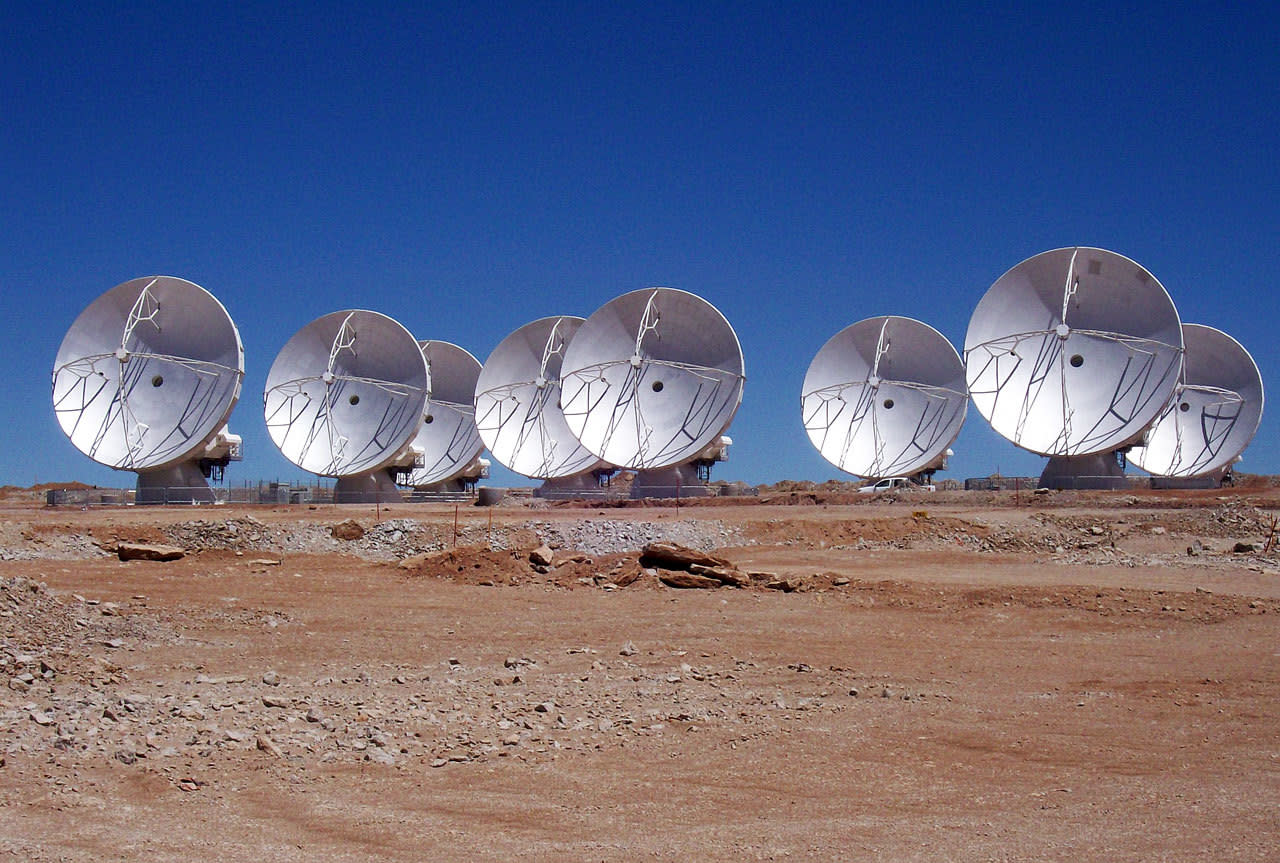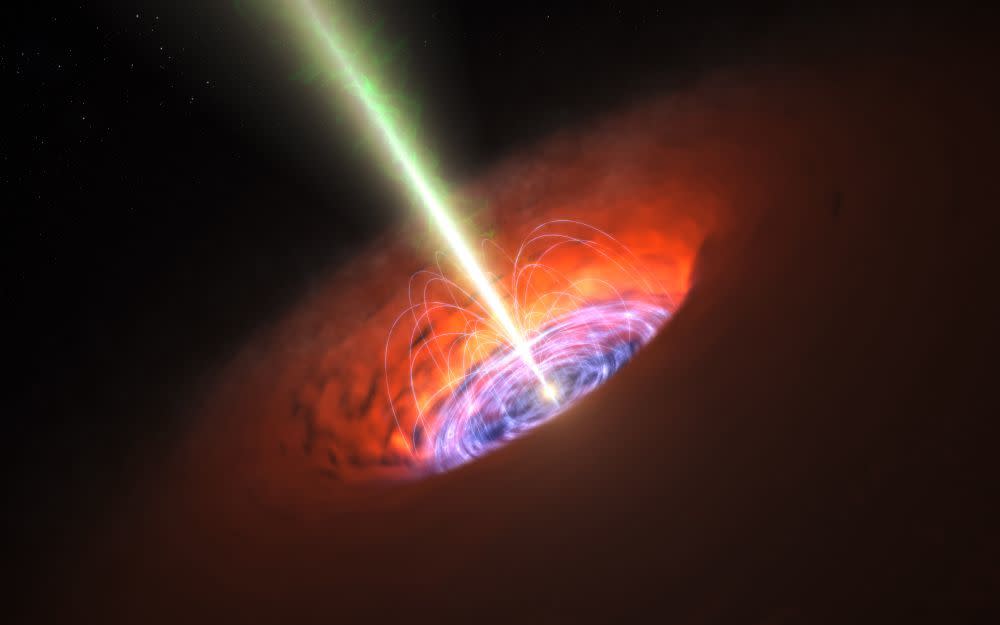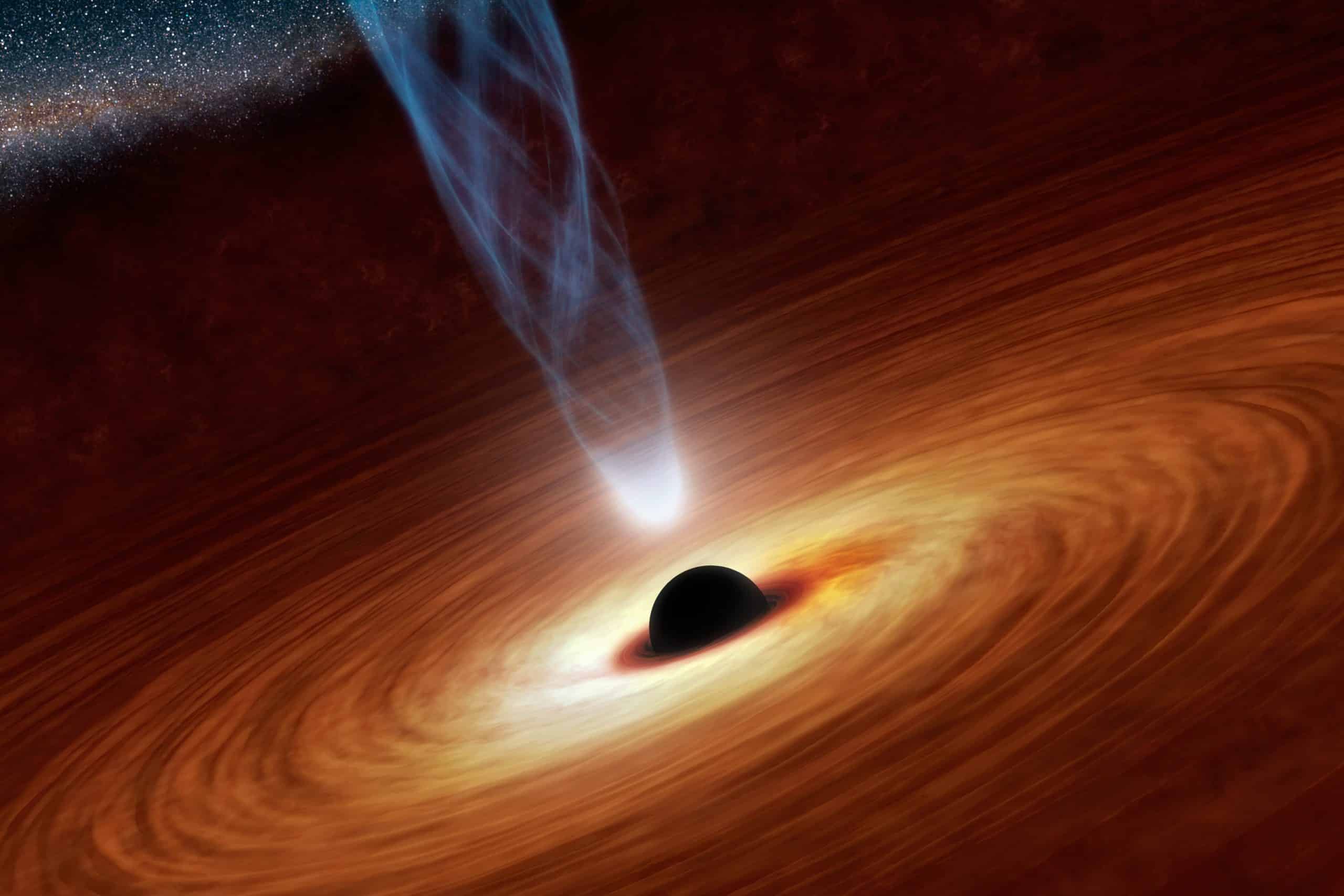We’ve all seen photos of planets floating around in space, but have you ever considered what a snapshot of a black hole might look like? Not the computer-generated renderings you see on Google Images or your standard desktop background but an actual, real life photo of the thing.
It may seem like a far-fetched concept, but the Event Horizon Telescope project is doing just that. It’s an extraordinary collision of photography and space science.
It’s like standing outside and trying to take a photo of a DVD on the moon.
The Event Horizon Telescope team plans to capture the world’s first ever photo of the Milky Way’s Supermassive Black Hole Sagittarius A* (pronounced Sagittarius “A” Star.) Despite its daunting name, the black hole itself measures 24 million km across, making it 17 times bigger than the Sun. That may sound huge, but it’s pretty measly when compared to the largest black hole ever found, estimated to be 21 billion times the size of the Sun.
“Our challenge is that we’re trying to take a picture of something that is very, very far away,” says Feryal Ozel, EHT team member and professor of astronomy and physics at the University of Arizona. “Our subject is so far away and so small in the sky that it’s like standing outside and trying to take a photo of a DVD on the moon.”

A modelled black hole shadow (left) and two simulated observations of Sgr A* using a 7-telescope and 13-telescope array (Fish & Doeleman)
And far it is, indeed. The Sagittarius A* sits a cool 25,000 light years away from us here on Earth. In theory, a telescope measuring the same size as our planet would be able to capture an image of the elusive black hole. Because this kind of undertaking is literally impossible, the only way for scientists to capture a photo of Sagittarius A* is to coordinate nine different telescopes to observe and form an image of the black hole over a short time.
The telescopes are positioned around the world, with stations in Antarctica, Chile, Hawaii, Germany, Spain, Mexico and Arizona. Each of the telescopes will record the signal at different times over the period of about a week in the spring of next year, a strategy that will create the same kind of final product an Earth-sized apparatus would create.
Though there isn’t room for a huge amount of creativity with this project, the way that the telescopes are being hooked up across the Earth and the communication that is being enabled between them are pretty unique. The team is using special recording techniques to effectively build a camera the size of the Earth with these telescopes. If that’s not big picture thinking, we’re not sure what is.
We think we know what a black hole should look like but there is gas swirling around it and that gas might do somewhat crazy things.
“My favourite part of working on this is trying to prepare for what it is we might see,” explains Ozel. “Because our telescopes are so spread out across the Earth, we’re going to have to work on making our image as crisp as possible. When you know roughly what you’re looking for, there are image reconstruction techniques that you can use. The part that I have been most heavily working on is trying to prepare for all possibilities. We think we know what a black hole should look like but there is gas swirling around it and that gas might do somewhat crazy things.”
Swirling gas isn’t the only oddity Ozel and her team face with the Event Horizon project. The EHT team has a series of challenges, both scientific and otherwise, that need to be overcome in order to make this photo a reality. For starters, the equipment that goes on each telescope is so specialized that it needs to be custom built for each apparatus involved in the project. Each telescope also needs an atomic clock that can record with an accuracy of a billionth of a second—just a tad bit more precise than your average Casio.

EHT telescopes
Each telescope observing the black hole only has a finite observing time window, since the telescopes themselves aren’t mobile. This poses another major challenge, since Sagittarius A* is not static but rather moves around in the sky. With the team trying to coordinate specific telescopes around the Earth, observations can span for up to twelve hours. “You can compare it to filling an image in pixel by pixel,” explains Ozel.
The full array image will be “shot” over one week in early March or April of 2017. That week may not be enough time for the team to form a clear image, however, since they’d like to repeat the experiment and get even more data over time. “We want to make sure we’re not looking at the black hole at a specific time. In science we’re always hoping to repeat things so we’re hoping to do this again in the coming years,” she says.
The human aspect of the Event Horizon project is another major challenge for Ozel and her team. The collaborative effort involved in photographing Sagittarius A* is nothing short of astronomic. Ozel is working on this project with a team of over 200 scientists at over 20 different institutions around the globe. It’s a massive group undertaking that requires a keen understanding of different cultures around the world, a strong grasp of the politics involved in using different instruments and a sharp awareness of the fact that all scientists don’t necessarily work or communicate in the same way.
Making sure everyone gets credit is definitely a huge challenge. Imagine trying to take one image with 200 photographers who all want their names on it!
“Not all scientists are trained to be working collaboratively in big groups so the sociological aspect of it makes it challenging,” explains Ozel. “There are lots of introverted people or people with different constraints on the institution they’re working with. Making sure everyone gets credit is definitely a huge challenge. Imagine trying to take one image with 200 photographers who all want their names on it!”
Anticipation continues to build for the Event Horizon Telescope project as the world’s first ever photograph of a black hole is only a few short months away from potentially becoming a reality. Regardless of the image produced by this global team effort, we’re certain that the final product of the Event Horizon venture will leave the world starry-eyed.

Artist concept of black hole (ESO/L. Calçada)












